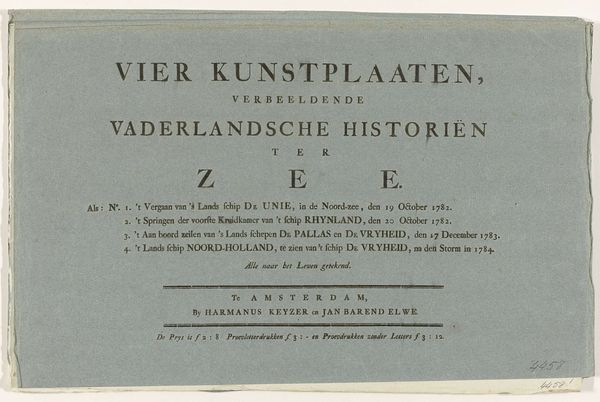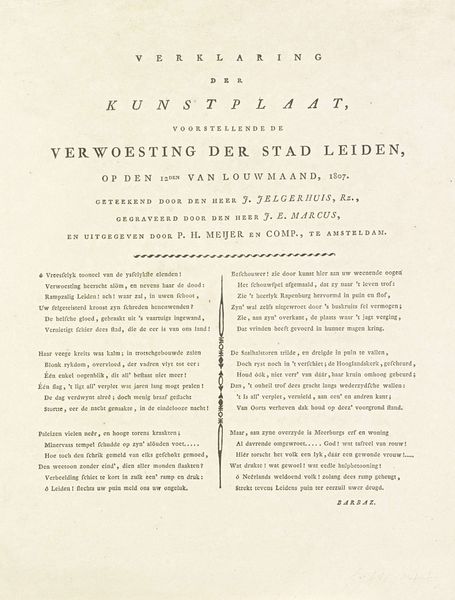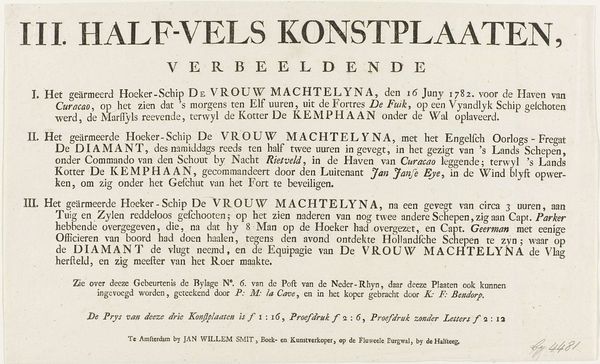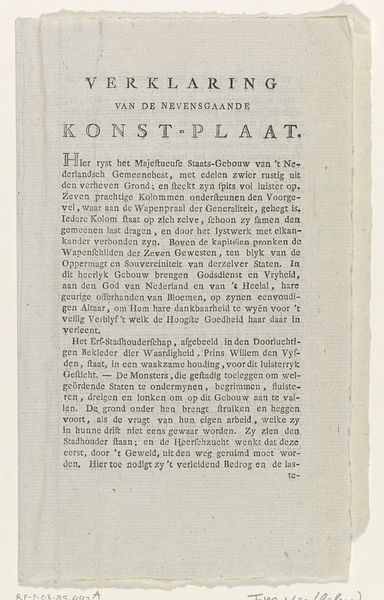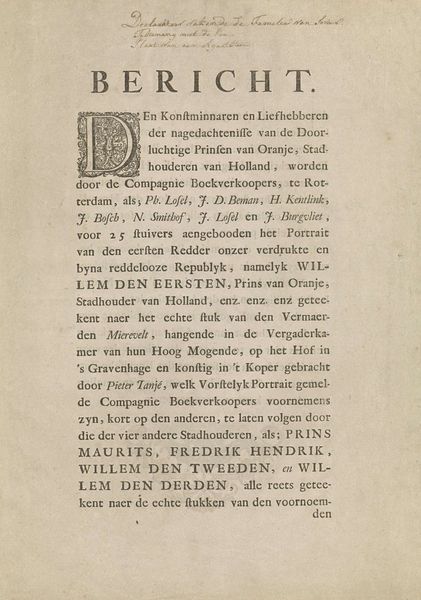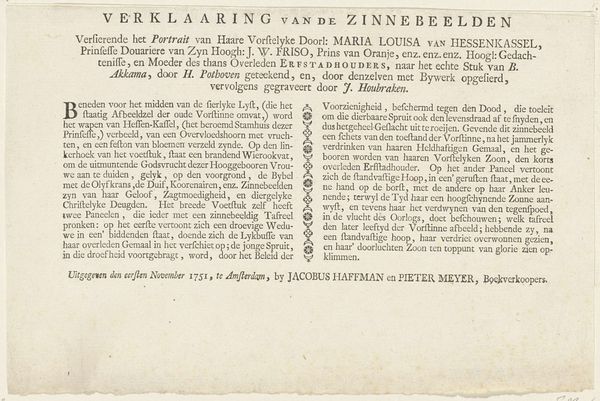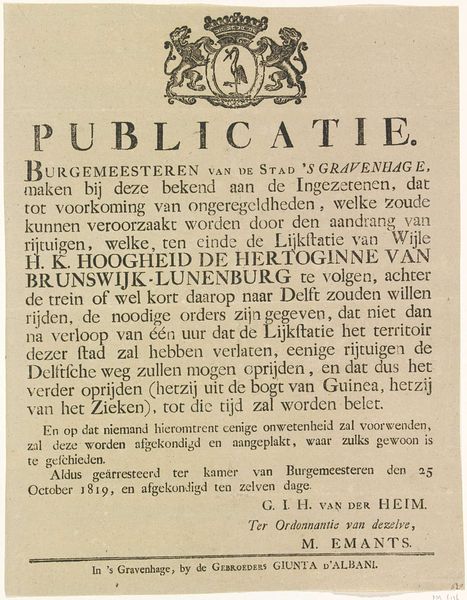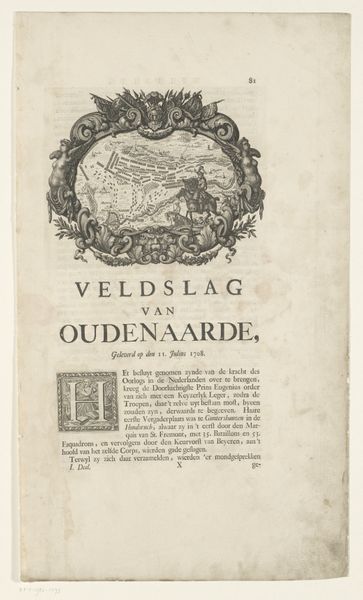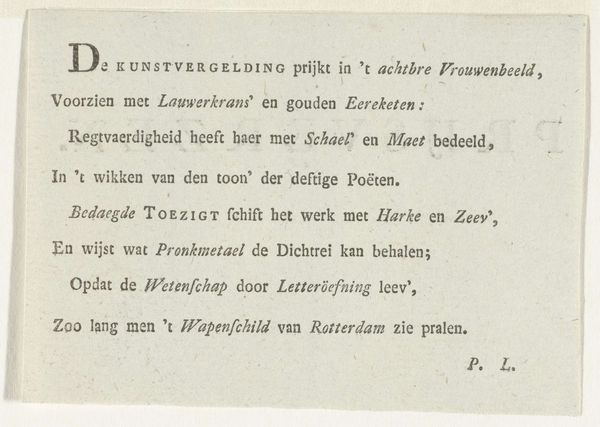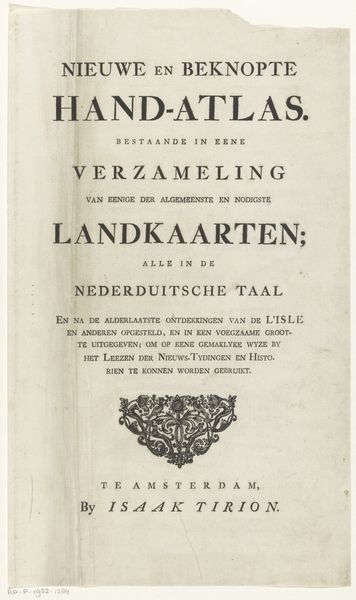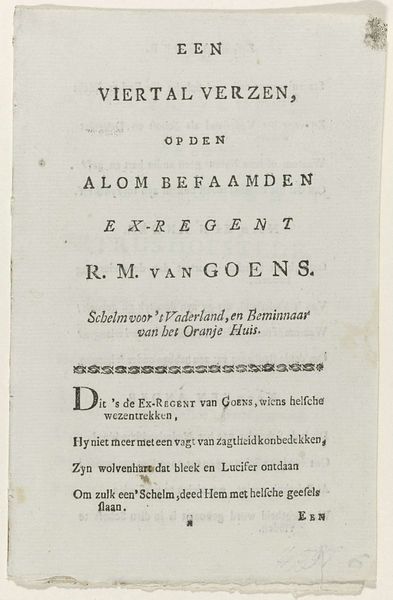
Map met vier platen van historische gebeurtenissen ter zee in de jaren 1781-1784, tweede serie 1784
0:00
0:00
carelfrederikibendorp
Rijksmuseum
Dimensions: height 290 mm, width 450 mm
Copyright: Rijks Museum: Open Domain
Editor: This is "Map met vier platen van historische gebeurtenissen ter zee in de jaren 1781-1784, tweede serie" by Carel Frederik (I) Bendorp, an engraving from 1784. It's quite text-heavy; at first glance, it reminds me of a political broadside, announcing naval events. How do you interpret this work within its historical context? Curator: The emphasis on “Vaderlandsche Historiën,” or national histories, is crucial here. This print wasn't just depicting naval events, it was actively constructing a narrative of Dutch identity and national pride, specifically during a turbulent time. How do you think the artist's choice of depicting naval events, rather than, say, land battles, plays into that construction of identity? Editor: Perhaps it speaks to the Netherlands' maritime history and economic dependence on sea trade? I mean, four out of four events are negative: saving a crew from a sunken ship, capsizing, and the ruin of vessels in storms... what kind of national pride is that? Curator: Exactly! That contrast reveals something deeper. While seemingly celebrating "national histories," the print also subtly hints at vulnerability and loss. Consider the publishers listed: Harmanus Keyzer and Jan Barend Elwe. Their role in disseminating this narrative—these "histories"—is integral. The act of publishing and circulating these images helped create a shared understanding of Dutch experiences, even if those experiences were tinged with hardship. Editor: So, the "national histories" become almost a form of propaganda, shaping public perception through both inclusion and strategic omission? It's interesting that something like this can reflect identity just by showing loss at sea. Curator: Precisely. And by looking closely, we can question whose history is being told, whose voices are amplified, and what purpose that serves in shaping national consciousness. It highlights the complex relationship between art, history, and the construction of identity in the 18th century. Editor: I see now. It's not just about battles and victories but also about how stories are framed and circulated to influence national sentiment. Thank you! Curator: It was my pleasure! Thinking about art with an activist lens opens a pandora box of opportunities for reinterpreting what one already knows.
Comments
No comments
Be the first to comment and join the conversation on the ultimate creative platform.
